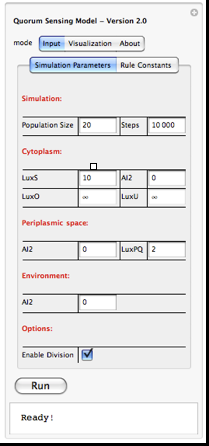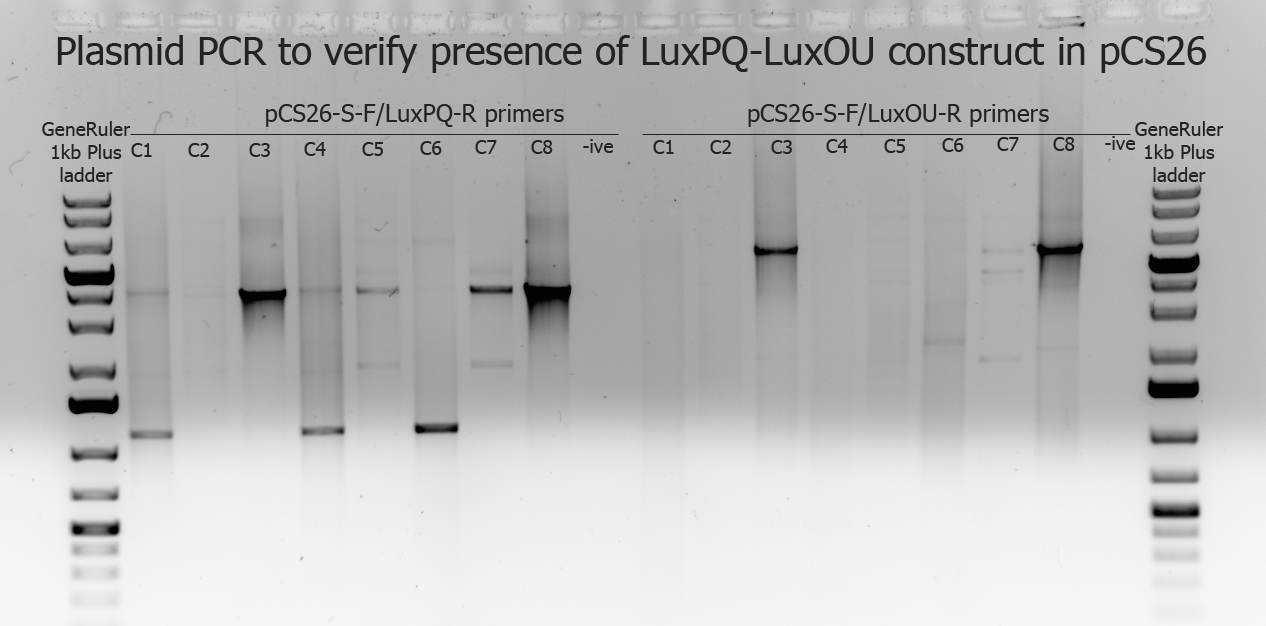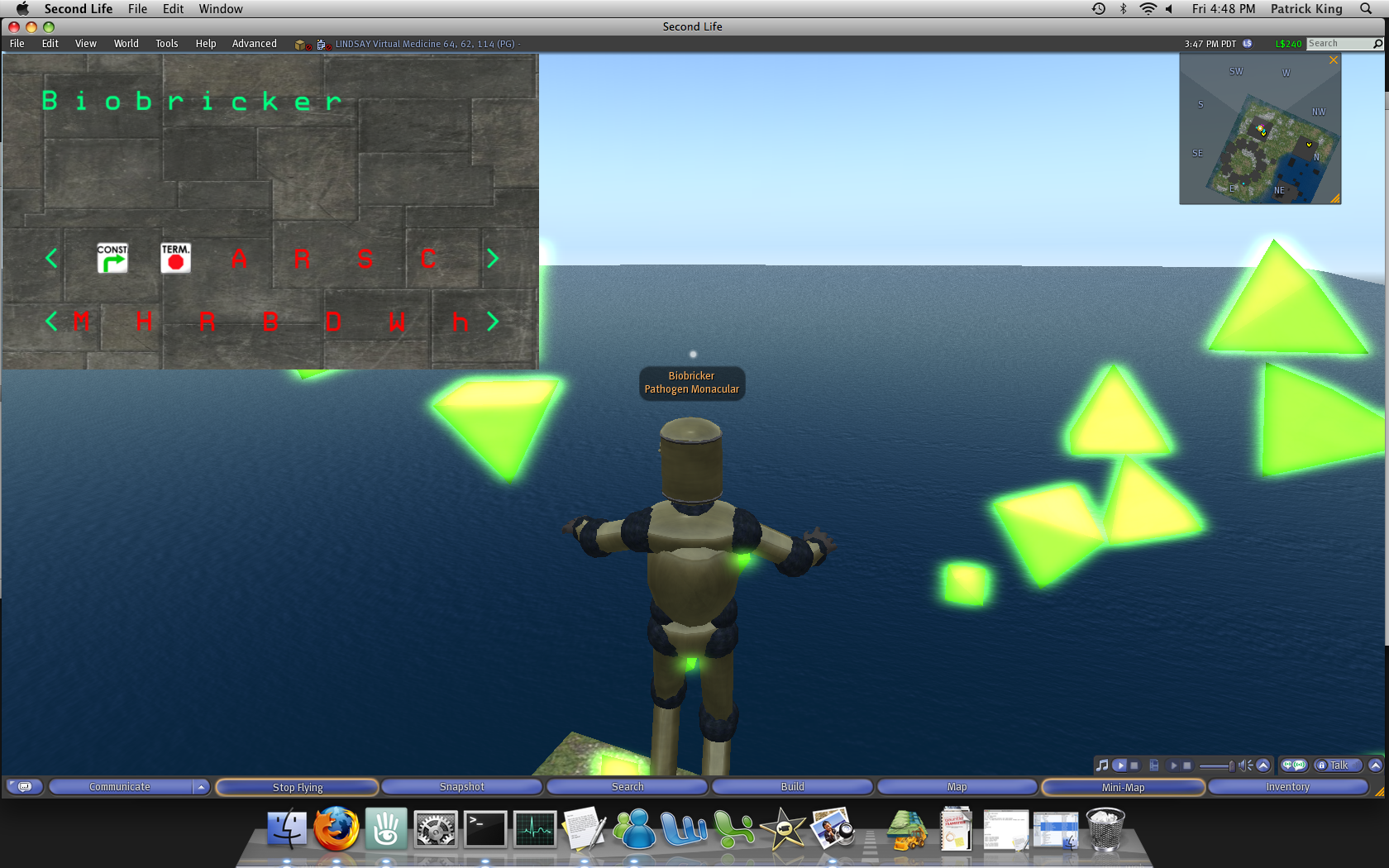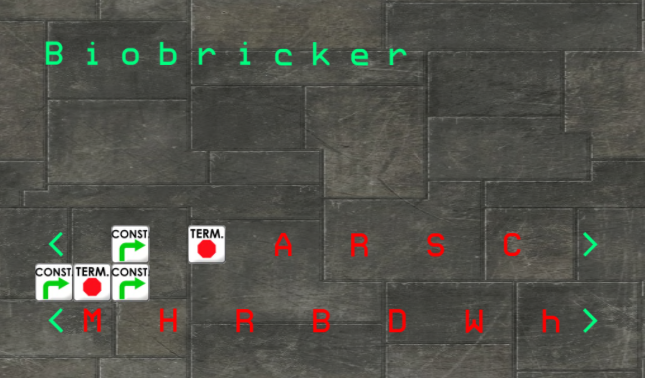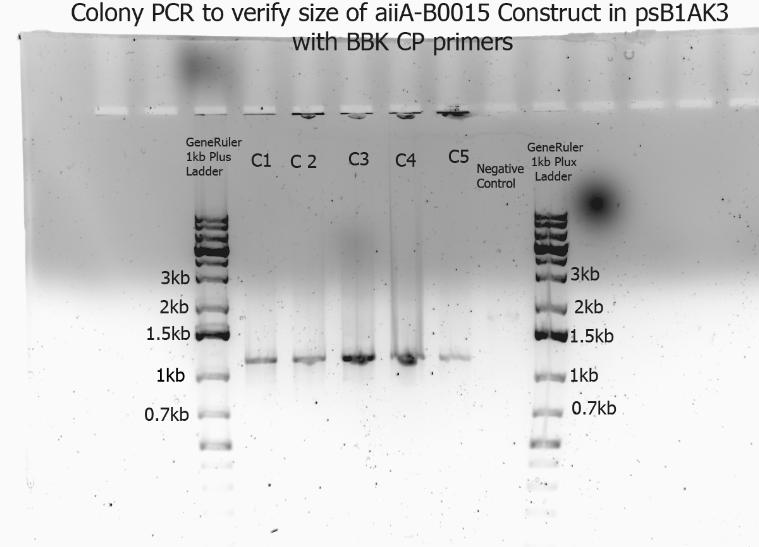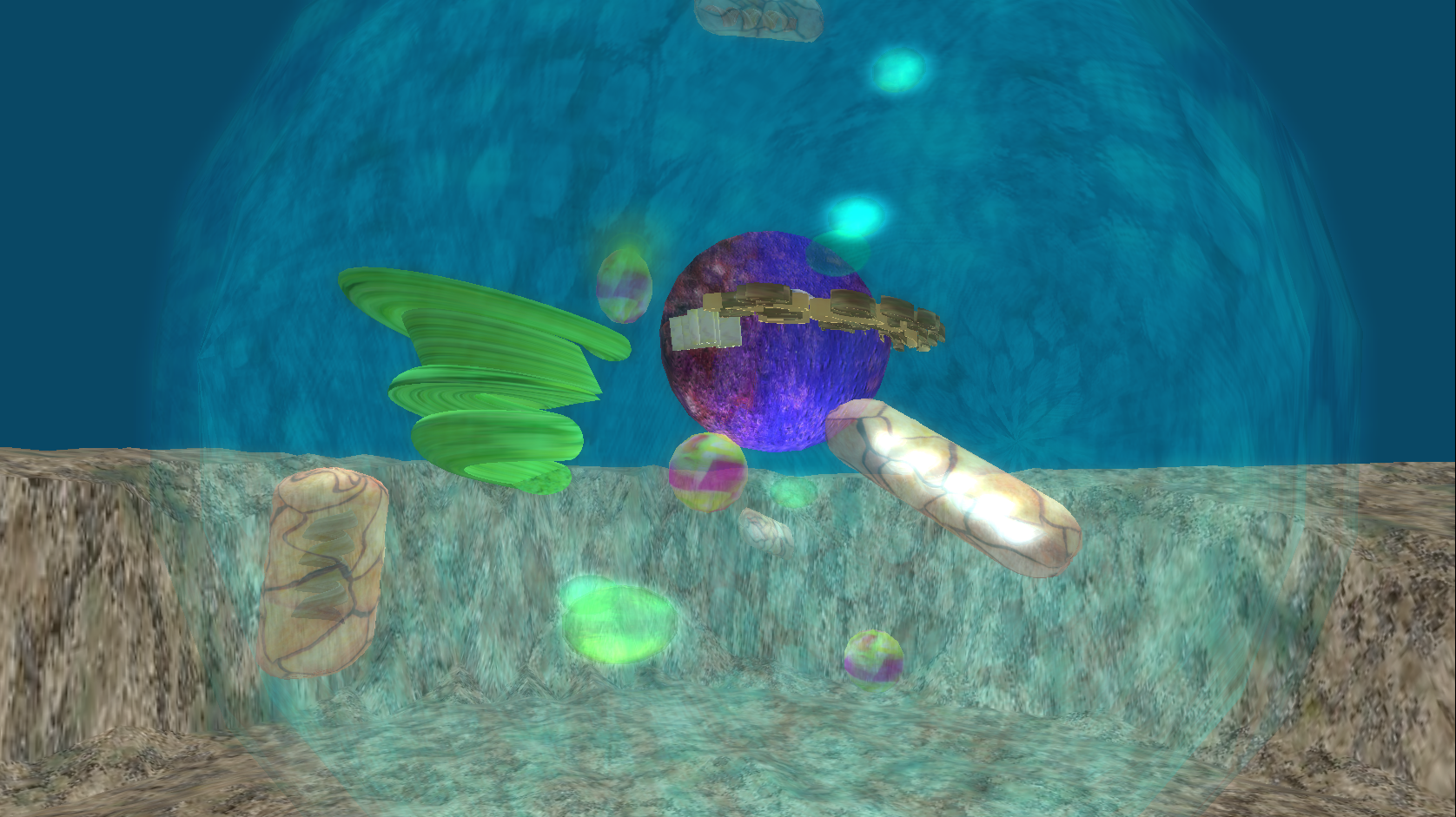Team:Calgary/14 August 2009
From 2009.igem.org
(Difference between revisions)
PatrickKing (Talk | contribs) |
Jamie.feng (Talk | contribs) |
||
| (19 intermediate revisions not shown) | |||
| Line 166: | Line 166: | ||
<br> | <br> | ||
<div class="heading"> | <div class="heading"> | ||
| - | + | Group Meeting | |
</div> | </div> | ||
<br> | <br> | ||
<div class="desc"> | <div class="desc"> | ||
</html> | </html> | ||
| - | + | * helped distribute questions to other team mates to help them answer questions efficiency and effectively. | |
<html> | <html> | ||
</div> | </div> | ||
| Line 191: | Line 191: | ||
<br> | <br> | ||
<div class="heading"> | <div class="heading"> | ||
| - | + | Questions day | |
</div> | </div> | ||
<br> | <br> | ||
<div class="desc"> | <div class="desc"> | ||
</html> | </html> | ||
| - | + | Today we had our very exciting and anticipated presentation about the Fort Mcmurray trip. Before the presentation we were supposed to have a modelling meeting but that was cancelled so we had more time to prepare for the presentation . Despite all the time we had I didn't have enough time to place the Bitumen on the slide. | |
| + | |||
| + | After the presentation we had a 2 hour very informative question period . I learnt a lot about the way to answer question : | ||
| + | Don't put definitions in your answers either the judge will ask the definintion or they already know. | ||
| + | Make the answers short and to the point . | ||
<html> | <html> | ||
| Line 218: | Line 222: | ||
<br> | <br> | ||
<div class="heading"> | <div class="heading"> | ||
| - | + | Presentations and Q/A Session | |
</div> | </div> | ||
<br> | <br> | ||
<div class="desc"> | <div class="desc"> | ||
</html> | </html> | ||
| - | + | *Today we gave a presentation on our trip to the Oil Sands, what we learned and where we can go from here. We focused on some of the ares that Synthetic Biology may be able to help Oil Sands production. For example, maybe we could engineer bacteria to break down some of the harmful substances that accumulate in the tailings ponds. | |
| + | *At the end of the meeting we had a Q/A session, where team members were asked questions about the various parts of our project in front of the group. We discussed the importance of answering questions clearly, consicely and quickly-kknowing what information is pertinant, rather than just saying everything that you know. | ||
<html> | <html> | ||
| Line 244: | Line 249: | ||
<br> | <br> | ||
<div class="heading"> | <div class="heading"> | ||
| - | + | Presentations and Q & A Day | |
</div> | </div> | ||
<br> | <br> | ||
<div class="desc"> | <div class="desc"> | ||
</html> | </html> | ||
| - | + | Today we had to give our supervisors a presentation on our trip to the oil sands in Fort McMurray. I was responsible for covering areas such as who organized this tour and what are some of the ethical issues that may arise from the oil sands. | |
| + | <br> | ||
| + | <br> | ||
| + | We also had a Q & A session, which was aimed at helping us prepare for the possible type of questions that would be asked us at the aGEM and iGEM jamboree. | ||
| + | |||
<html> | <html> | ||
| Line 270: | Line 279: | ||
<br> | <br> | ||
<div class="heading"> | <div class="heading"> | ||
| - | + | Interface | |
</div> | </div> | ||
<br> | <br> | ||
<div class="desc"> | <div class="desc"> | ||
</html> | </html> | ||
| - | + | Once again, we are making our model more user-friendly with introducing new interface. We have posted a full description of the new interface and its link is: | |
| + | |||
| + | http://igemcalgary.blogspot.com/ | ||
| + | |||
| + | however, i am going to review this interface quickly: | ||
| + | |||
| + | Beside the fact that we want to have an accurate model, the model should also be easy to use. So it is tried to design an interface that makes the model user friendly. There are three different tabs on the top: Input, Visualization and About. Input tap includes 2 sub-tabs: "Simulation Parameters" and "Rule Constants". Under "simulation Parameters", there are various parameters to set before running the simulation. To get the user started, each parameter is set to a default value. Users are able to modify each value before running the program. The simulation has general parameters to set (population size and simulation step). In addition, Cytoplasmic and Periplasmic spaces and environment also get their own list of parameters (right figure). The second sub-tab is "Rule Constants". Each rule in our simulation has a constant associated with it. This constants are used for calculating probability of the application of the interaction rules. The system is loaded with default values for each constant. However one can modify each value before running the simulation (left figure). At bottom of the interface we have a check box which allows user to introduce division into the mix. Visualization tab provides an animation of the biological details of the AI-2 signaling system, and "About" tab introduces users to the computer science aspects of the model. | ||
| + | |||
| + | [[Image:inter.png]] | ||
| + | |||
<html> | <html> | ||
| Line 296: | Line 314: | ||
<br> | <br> | ||
<div class="heading"> | <div class="heading"> | ||
| - | + | AI-2 Activity Assay | |
</div> | </div> | ||
<br> | <br> | ||
<div class="desc"> | <div class="desc"> | ||
| - | </ | + | Cell free supernants from DH5a, <i>S. typhimurium</i> and <i>V. harveyi</i> were made from overnight cultures and were tested with various reporter strains. A plate reader was used to take luminescence readings for a period of 24 hours. |
| - | + | ||
| - | + | ||
| - | < | + | |
</div> | </div> | ||
</td> | </td> | ||
| Line 322: | Line 337: | ||
<br> | <br> | ||
<div class="heading"> | <div class="heading"> | ||
| - | + | PCR to verify cloning of PQ-OU into pCS26 | |
</div> | </div> | ||
<br> | <br> | ||
<div class="desc"> | <div class="desc"> | ||
</html> | </html> | ||
| - | + | A plasmid PCR was set up on August 13 of the PQ-OU construct in the pCS26 vector with pCS26-S-F and LuxPQ/OU-Reverse primers. Of the eight colonies that were screened, two colonies (3 & 8 - see below) revealed expected sizes: : ~4kb for pCS26-S-F and LuxPQ-Reverse and ~6kb for pCS26-S-F and LuxOU-R. Colony 8 was sent to the University of Calgary sequencing facility with pCS26-S-F and LuxOU-R primers. | |
| - | + | [[Image:2009.08.14.PQ.OU_pCS26_PCR.png|700px]] | |
| - | + | ||
| - | + | ||
| - | + | ||
| - | + | ||
| - | + | ||
| - | + | ||
| - | + | ||
| - | + | ||
| - | + | ||
| - | + | ||
| - | + | ||
| - | + | ||
| - | + | ||
| - | + | ||
| - | + | ||
| - | + | ||
| - | + | ||
| - | + | ||
| - | + | ||
| - | + | ||
| - | + | ||
| - | + | ||
| - | + | ||
| - | + | ||
<html> | <html> | ||
| Line 374: | Line 365: | ||
<br> | <br> | ||
<div class="heading"> | <div class="heading"> | ||
| - | + | Verifying the fluorescence of the cells with reporter and mutant circuit | |
</div> | </div> | ||
<br> | <br> | ||
<div class="desc"> | <div class="desc"> | ||
</html> | </html> | ||
| - | + | The cells with reporter and mutant circuits were viewed under UV in order to see if the mutants and the reporter circuits are properly functional. However, no colonies were found to be glowing. Since the level of GFP production is low due to the inducible low copy plasmid that it is in, we may have to grow an overnight culture and measure the fluorescence of the culture with the plate reader. If the fluorescence is found to be too low to decide whether or not the circuits are properly functioning, we may have to induce the cells with IPTG to induce the duplication of the reporter circuit. This would hopefully increase the production levels of GFP because more Pqrr4 promoters would be available for the mutant proteins to attach to. | |
| - | + | ||
<html> | <html> | ||
</div> | </div> | ||
| Line 400: | Line 390: | ||
<br> | <br> | ||
<div class="heading"> | <div class="heading"> | ||
| - | + | Wiki Design and Planning | |
</div> | </div> | ||
<br> | <br> | ||
<div class="desc"> | <div class="desc"> | ||
</html> | </html> | ||
| - | + | Today, I worked on creating the 'tour' of our wiki which would guide users easily through key components of our wiki (to supplement the site map and the menu). Brief descriptions of each 'stop' on the tour must still be written and editted. | |
| - | + | <br> | |
| + | As well, a list of goals and articles still required for the wiki now exists, hopefully to be completed in time for aGEM. | ||
| + | <br> | ||
| + | Last minute edits and transfer of ownership of my objects in Second Life were done to allow my team mates to work on them while I am away. I also worked on the starting island, making it more clear to users how to enter the synthetic kingdom, and setting up a better system for easy teleportation through a map of the island. | ||
<html> | <html> | ||
| + | <Br> | ||
</div> | </div> | ||
</td> | </td> | ||
| Line 469: | Line 463: | ||
<br> | <br> | ||
<div class="heading"> | <div class="heading"> | ||
| - | + | Colony PCR | |
</div> | </div> | ||
<br> | <br> | ||
<div class="desc"> | <div class="desc"> | ||
</html> | </html> | ||
| - | + | Purpose: allow colony bacteria on my plates to pick-up dNTPs and primers to see if the colonies contain the size of that I had constrcted. I used BBK CP primers (forward and reverse) because my construct is on an 1AK3 vector. I picked 5 colonies from my plates and used the mastermix as my negative control and ran the PCR. | |
| + | I accidently made my 1% gel with low-melt agarose and the gel obviously didn't solidify like I wanted it to. I put my PCR products in the fridge. I'll run it tomorrow using 1% regular-use agarose. | ||
| + | We also had a 2 hour question period where each member of the team were asked questions about different aspects of the project. | ||
| + | |||
| + | I ran the colony PCR for colonies 1-5(which was held at 4 degrees in the PCR overnight) today in 1% gel. The following diagram is the resulting gel: | ||
| + | <br> | ||
| + | <center> | ||
| + | [[Image:Colony_PCR.jpg|500px]] | ||
| + | </center> | ||
| + | <br> | ||
<html> | <html> | ||
</div> | </div> | ||
| Line 495: | Line 498: | ||
<br> | <br> | ||
<div class="heading"> | <div class="heading"> | ||
| - | + | The eukaryotic cell | |
</div> | </div> | ||
<br> | <br> | ||
<div class="desc"> | <div class="desc"> | ||
</html> | </html> | ||
| - | + | It was remodeled because the megaprim that was used in building it got permanently smaller for some unknown reason. I changed the color and transparency, organelles were rebuilt, and nucleus color was changed. Everything was resized to be smaller which led to the particle effects being seen better so that's a plus. Overall the cell looks more vibrant and full. | |
| + | <br><br> | ||
| + | <center> | ||
| + | [[Image:Calgary Cellnew 001.png|700px]] | ||
| + | </center> | ||
| + | |||
<html> | <html> | ||
| Line 521: | Line 529: | ||
<br> | <br> | ||
<div class="heading"> | <div class="heading"> | ||
| - | + | Parameter optimisation of signalling pathway without AI-2 present | |
</div> | </div> | ||
<br> | <br> | ||
<div class="desc"> | <div class="desc"> | ||
</html> | </html> | ||
| - | + | Using the SimBiology toolbox at the command line level, I figured out how to optimise parameters within our signalling pathway without AI-2 present. To accomplish this, I first ran the simulation with our (very rough) parameter approximations, as provided by Carol, Chinee and Kevin. I then made up a set of GFP output data with respect to time. This fabricated set did not match the GFP output with our original parameter approximations. The rationale is that if we can implement a way of optimising our parameters to fit a set of data, we will be able to do the same when we actually have a real set of data to work with. Graphs will be put up closer to the end of the project, but here are some interesting numbers for comparison: | |
| + | |||
| + | BEFORE OPTIMISATION | ||
| + | R-squared value of simulated GFP output and my made-up data: -203 | ||
| + | |||
| + | AFTER OPTIMISATION | ||
| + | R-squared value of simulated GFP output (with new parameter estimates) and my made-up data: 0.9911 | ||
| + | |||
| + | The next step is to write a script for this so that it may be automated. As well, I will figure out how to work the sensitivity analysis so that we don't waste time and iterations on parameters that really don't make a difference. | ||
<html> | <html> | ||
Latest revision as of 03:39, 22 October 2009
UNIVERSITY OF CALGARY

 "
"











